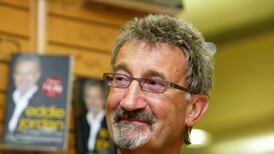Conor McCarthy (October 25th, 1936 – January 16th, 2024) was a key member of the pioneering generation of interventional cardiologists in Ireland, and a central figure in the development of Ireland’s first coronary artery surgery unit at the Mater Misericordiae Hospital.
Conor was born into a medical family. His father was the chief psychiatrist at St Brigid’s Hospital, Ballinasloe. Conor often reminisced about an idyllic childhood in east Galway, where from an early age he was heavily involved in sport and outdoor activities. His primary school education took place at the Hill School Sligo, where his grandfather Francis J Broderick was the headmaster, and subsequently at Creagh national school in Ballinasloe.
In 1948 he enrolled in Clongowes Wood College. In addition to an excellent academic record at Clongowes, he exhibited considerable sporting prowess, both on the rugby field and in athletics. He captained Clongowes to victory in the Leinster Junior Cup in 1952. Throughout his life he maintained a keen interest in the Clongowes rugby teams, attending any Junior Cup finals they were involved in, and bringing with him the 1952 winning ball with the intention of giving it to the next winning Clongowes Captain. Sadly the opportunity did not arise. Conor was all-Ireland and Leinster Schools discus champion in 1954.
He joined UCD medical school in 1954, and while there he continued his sporting activities, winning novice and senior championships in pole vault, javelin, shot, and discus events.
Spinal surgeries report: At heart is a labyrinthine and confusing system of governance and care
UK has to pick a side between the US and the EU - and Northern Ireland is stuck in the middle
There is one risk to Ireland’s future progress that dwarfs even pandemics, terrorism and tariffs
AI panic: Artists angry that a machine is learning from their work should relax
He also played rugby for UCD, but a shoulder injury forced him to discontinue his athletic career.
He enjoyed great academic success in UCD, winning gold medals in medicine, surgery, and obstetrics/gynaecology.
He interned at St Vincent’s under Prof Patrick FitzGerald in surgery and Prof Oliver FitzGerald in medicine.
He undertook a research fellowship in Trinity College Dublin, with Dr GW Pennington. They developed a novel immunologically-based pregnancy test. He published widely with Dr Pennington in the international literature and was awarded an MSc.
He was appointed as a registrar in cardiology in the Mater in 1963 and undertook further senior cardiology training at Bristol Royal Infirmary and Saint Mary’s Hospital London. During this time he obtained the British and Irish medical memberships, and was awarded the MD degree. While in England he married Dale Parry, a marriage which ended in divorce.
In 1973 he was appointed as a consultant cardiologist and cardiac physiologist in the Mater and was instrumental in developing the existing cardiac catheterization facilities in preparation for the coronary surgery programme. He also obtained a European travelling fellowship in 1975 to visit centres in London, Amsterdam, Copenhagen and Munich.
The cardiac team that he joined in the Mater developed into a world-recognised centre for excellence in cardiology and cardiac surgical care. In addition to coronary artery surgery, they introduced other advanced cardiac treatments, such as percutaneous trans-catheter angioplasty, stenting and ultimately heart transplantation. Most of the next generation of cardiologists had their core interventional cardiology training in Conor’s catheter laboratory.
He also maintained a busy cardiology private practice at the Blackrock Clinic.
He had many years of happiness with Gerardine Treacy, his second wife. Conor retired in 2001, and spent much time contentedly on his boat on the river Shannon.
Conor was a very quietly-spoken and in some ways shy man, but was also very social. His and Gerardine’s annual St Stephen’s Day party for family and friends was not to be missed. Their dinner parties included all shades of the medical profession, together with economists, artists and sundry Clongowes Old Boys.
The same group would on occasion meet in Hartigan’s of Leeson Street. Many were “440 men”, ie those who obtained full marks in the old Leaving Cert subjects (ie 400 points) and an extra 10 per cent for having sat the test in Irish.
He was kindness and gentleness personified. Those of us who saw Conor in action professionally will always remember a superb clinician, who combined skill, never-failing courtesy and compassion. He was an outstanding physician and, as I know personally, an outstanding boss.
A bad fall and a subsequent severe rare medication reaction in 2010 sadly necessitated permanent hospitalisation.
He was predeceased by his brother Ciaran and is survived, much missed by his wife Gerardine, brother Donald, sister Geraldine, brother-in-law Patrick, sisters in law Dorothy and Ann, nieces and nephews Mary Rose, Conor, Myles, Justin, Gerard, Patrick, Hilda, Aoife, Conor, and Joseph.













